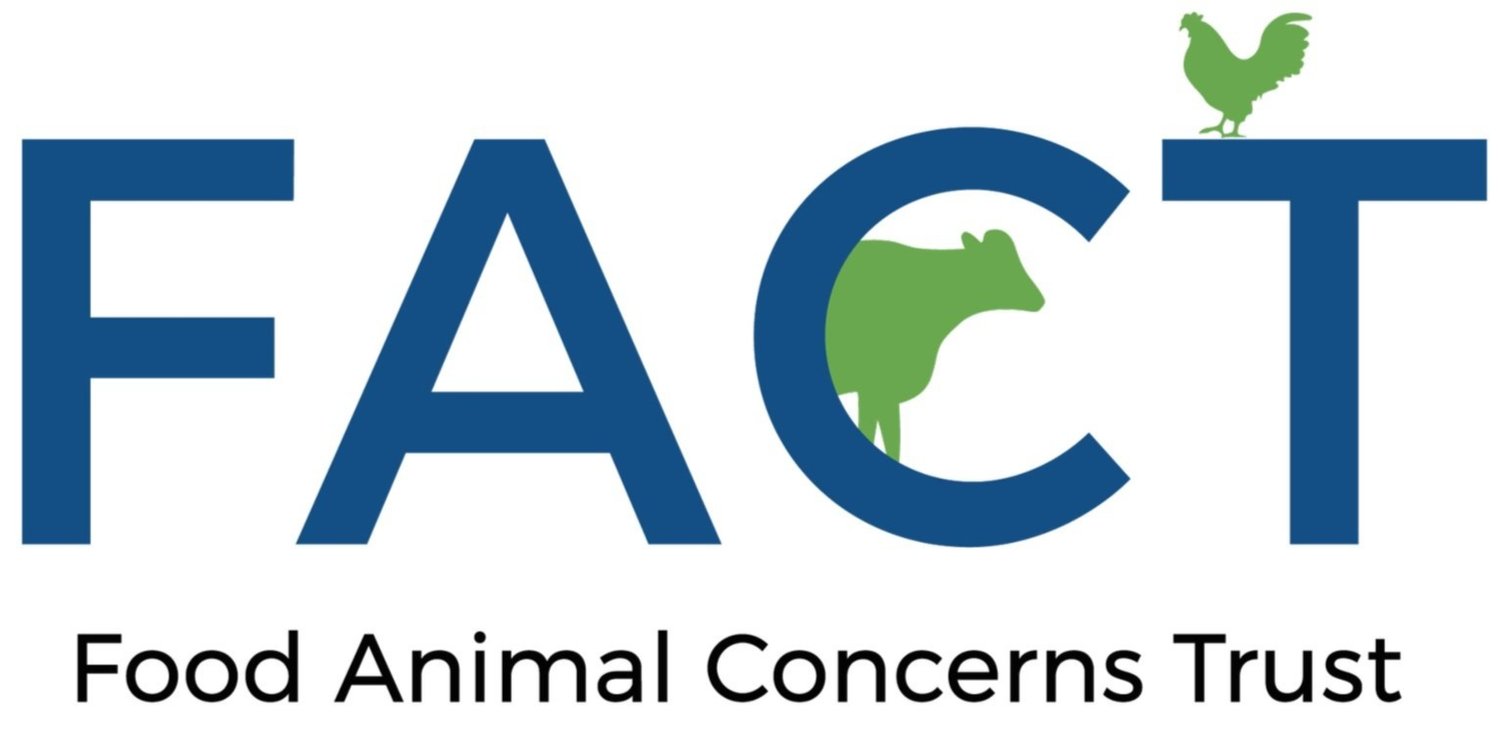The Myth of the Small Farm
This week we have a guest blog post from Thom Norman at FarmKind. While we agree with the overall message of the article, all numbers and research statistics are the work of FarmKind, not FACT. We hope you enjoy this guest article.
Author: Thom Norman is co-founder of FarmKind. FarmKind helps people who feel compassion for animals to help the animals most in need and support their favorite charities at the same time. FarmKind collaborates with experts to identify some of the most effective charities combating factory farming. FarmKind enables users to split their donations between these expert-recommended, super-effective charities and their personal favorite causes, like their local shelter, getting a bonus on both.
Ask the average person on the street what a farm looks like, and you'll likely get some idyllic image of a small family-run business with sprawling fields, red barns and perhaps a few animals gently grazing in some fields. This image of the 'traditional' farm is an abiding part of the American identity.
In a world in which trust in all kinds of institutions is waning, studies show that Americans hold strongly positive views of farms, consistently giving them high approval ratings alongside restaurants and grocery stores. The public tends to associate farming with small, family-owned operations that are trustworthy, environmentally conscious, and producers of healthy, safe, and tasty food.
However, this pastoral myth stands in stark contrast to the reality of modern agricultural production in the United States. Recent analysis by FarmKind and Bryant Research reveals a troubling disconnect between perception and reality.
"The public has been deliberately deceived by the meat industry. They have consistently told us that most farms are small farms, and that's true, but they produce almost none of the animals," says Chris Bryant, Director of Bryant Research. "In the same way, most settlements in the US are villages -- but almost all the people live in cities."
While small farms make up the majority of total operations (around 78%), they raise a tiny fraction of the country's animals. A mere 0.1%. In stark contrast, the largest 2.6% of farms are responsible for a staggering 98% of animal production. This trend towards consolidation has accelerated dramatically over the past half-century. Take, for example, the egg industry. In 1978, 32% of egg-laying hens were raised on the largest farms. Today, that figure has skyrocketed to 75%. The pork industry paints an even more dramatic picture, with the proportion of pigs raised on the largest farms surging from 29% in 1992 to an overwhelming 95% today.
As a result, since 1981, the United States has lost 544,000 farms as the average farm size has increased. Employment in agriculture has plummeted to an all-time low, with only 1.5% of Americans now working in the sector.
Iowa, traditionally known for its small family hog farms, exemplifies this shift: from 1982 to 2017, while the number of hogs sold rose by 250%, the number of hog farms dropped by 90%, and employment in the sector fell by 44%. FarmKind's research shows that small hog farming has been decimated in the state, with just 26% of pig operations there being small farms, raising just 0.2% of pigs, while its 2,464 megafarms are responsible for raising 92% of the pigs there.
Yet the agriculture industry continues to present small farms as the face of American farming. Big operations and landowners reap far greater benefits from government subsidies than small-scale farmers, even though the latter are often the public face of lobbying efforts. For example, from 1995 and 2023, 27% of subsidies to farmers in the US went to the richest 1% of recipients.
This strategic misrepresentation serves to obscure the fact that it is big agribusiness that captures the lion's share of production, profits, and government subsidies. By maintaining this façade, the industry deflects scrutiny from the industrial-scale operations that now dominate our food system.
The consequences of this shift extend far beyond mere statistics. The concentration of animal agriculture into fewer, larger operations carries severe implications for our environment, public health, and rural communities.
Environmentally, these massive operations generate enormous amounts of animal waste, often far more than can be safely absorbed by surrounding land. This leads to water pollution, as excess nutrients and pathogens from manure runoff contaminate local water sources. The American Public Health Association has twice called for a moratorium on new factory farms, citing respiratory problems and elevated blood pressure caused by toxic pollution. Alarmingly, there's some evidence that these facilities are disproportionately built in poor and non-white areas, raising serious environmental justice concerns.
From a public health perspective, the density of animals in industrial farm settings creates ideal conditions for the spread of diseases, including those with pandemic potential. The recent outbreaks of bird flu (avian influenza) highlight this risk. In factory farms, birds are kept in crowded conditions and bred to be genetically identical – factors that allow for the emergence and rapid spread of highly virulent viruses.
We need to confront the reality of modern American agriculture and challenge the industry's myth-making. This is the first step towards addressing the challenges caused by our increasingly industrialized food system.
As individuals, we are not powerless here. Even something as simple as donating to charities that are effectively tackling factory farming can make a massive difference. By supporting efforts to raise the bar for welfare standards out of the hole in which it currently now resides, we can stop the race to the bottom on standards that give factory farming such a cost advantage. We can also encourage efforts to make plant-based and cultivated meat alternatives more available, reducing the demand for cheap meat which is a driver of the dominance of factory farming.
If you would like to find out more about how you can be a part of bringing factory farming to an end, we've built a short guide which you can read here.
